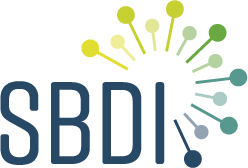
Only a fraction of fungal diversity is visible as mushrooms on the forest floor or toadstools on trees and logs. Soil fungal diversity has received increasing attention over the last 20 years when molecular methods has allowed us to characterize fungal diversity directly from soil and root samples. Over the years these methods have revealed that the majority of fungal sequences cannot be assigned to a described species. One particularly prominent group of largely undescribed fungal diversity is the class Archaeorhizomycetes. Sequences belonging to the class has been identified on all continents but appear to be more abundant in samples from Europe based on environmental sequencing studies. Over all the class is abundant in tundra and boreal forests, dominating total abundance of fungi in soil and across Scandinavia the class is detected in almost all analyzed samples sometimes making up as much as 30% of the sequenced community. Using sequencing clustering as a proxy for species indicate at least 100 species likely to occur in Sweden.
In a study from the Ivantjärnheden field station near Jädraås, Gästrikland, in Eastern central Sweden a method was developed based on sequencing both long DNA sequences, to investigate species interrelationships, and short DNA sequences to get an idea of how common species are in different niches in soil. By combining information about relatedness and distribution, the study identified two closely related but distinct species that compete for resources in the soil profile. One wins out, and is dominant, in organic soil; for this the name Archaeorhizomyces victor was proposed. In second place is Archaeorhizomyces secundus, which makes do with resources in mineral soil to a greater extent.
Many other fungi were also captured in the analysis but only two were statistically distinct in the analysis. By increasing the access to sequence data that capture intra-organismal variation we will be able to better characterise identify many new species in the future.
If you want to know more about research and data from from this group, contact our partners at Uppsala University.
